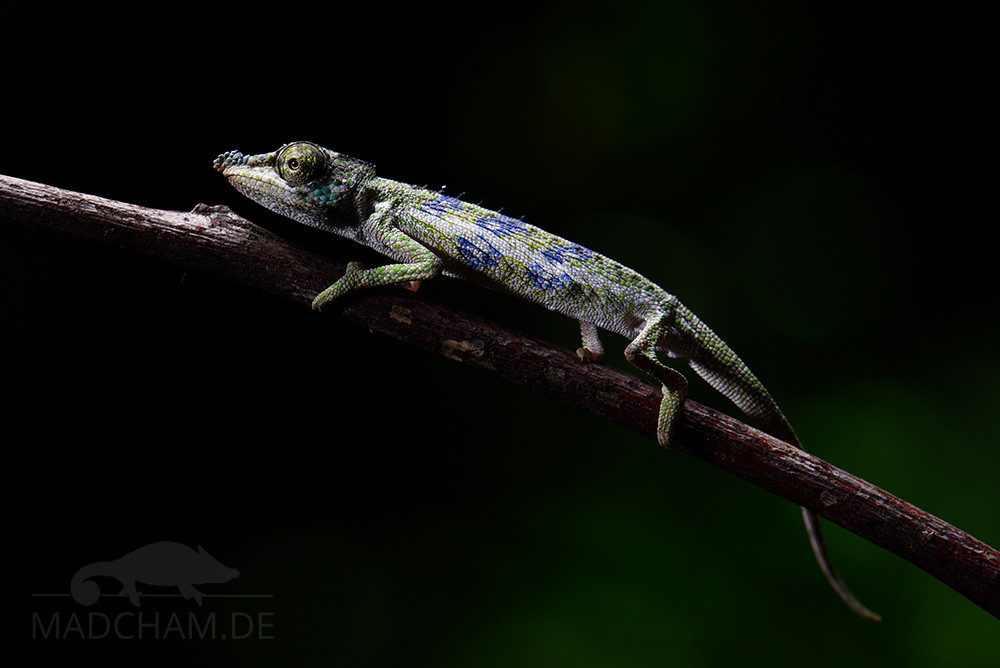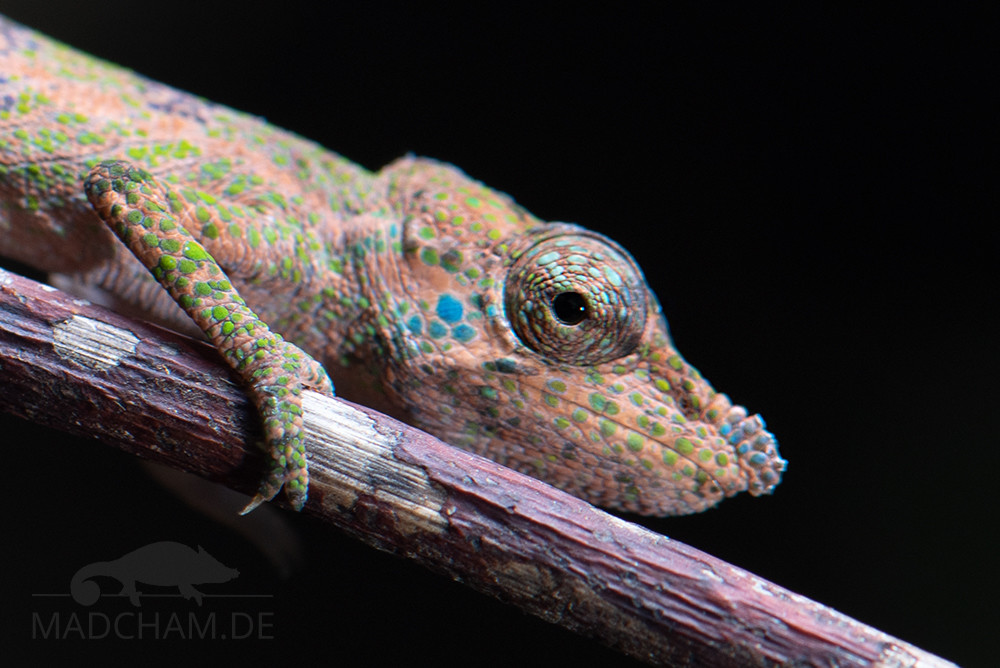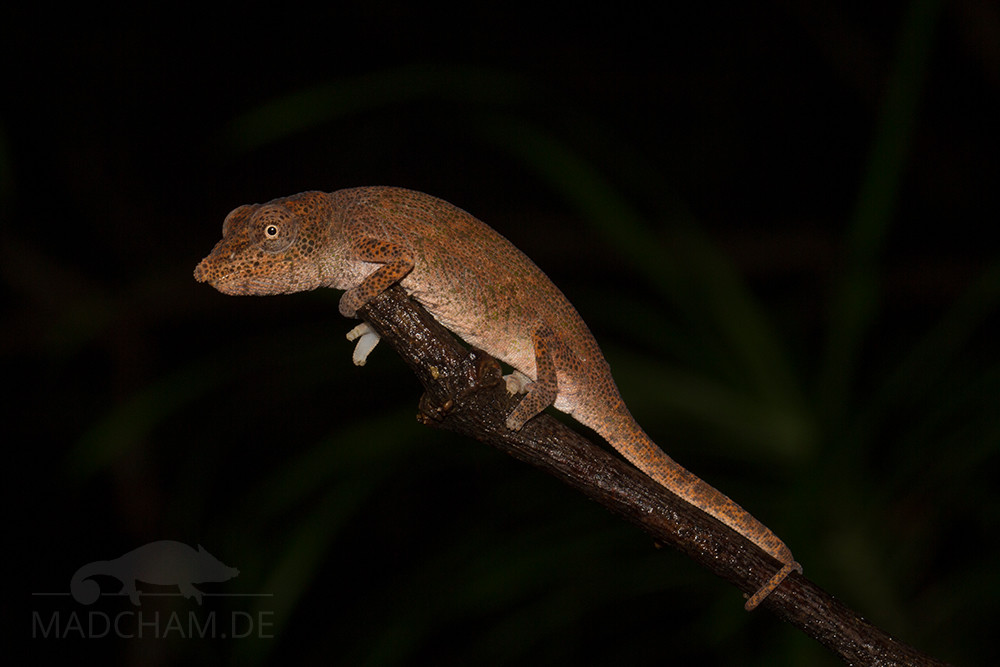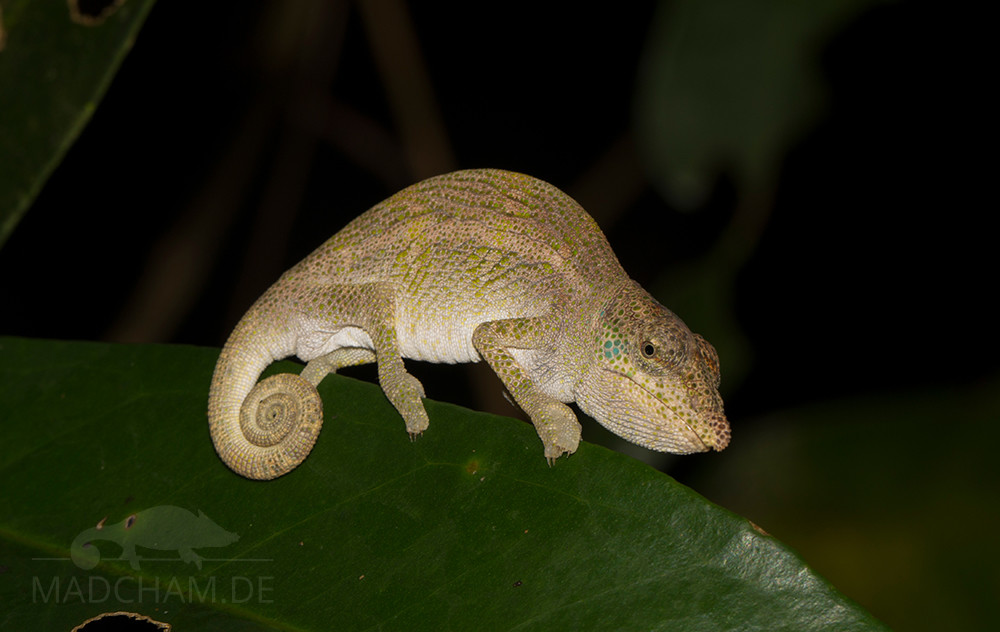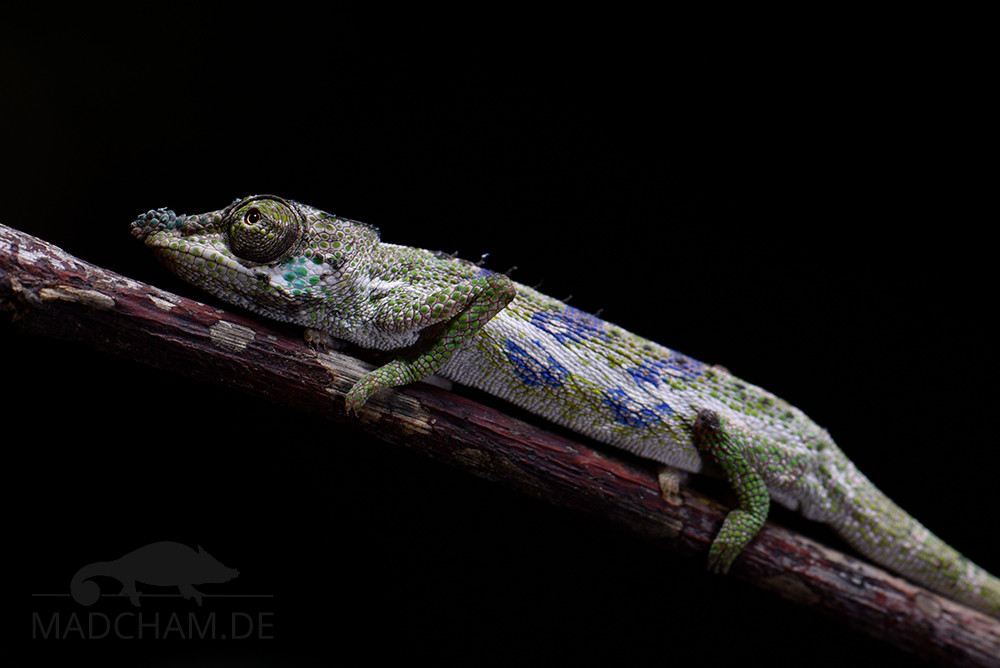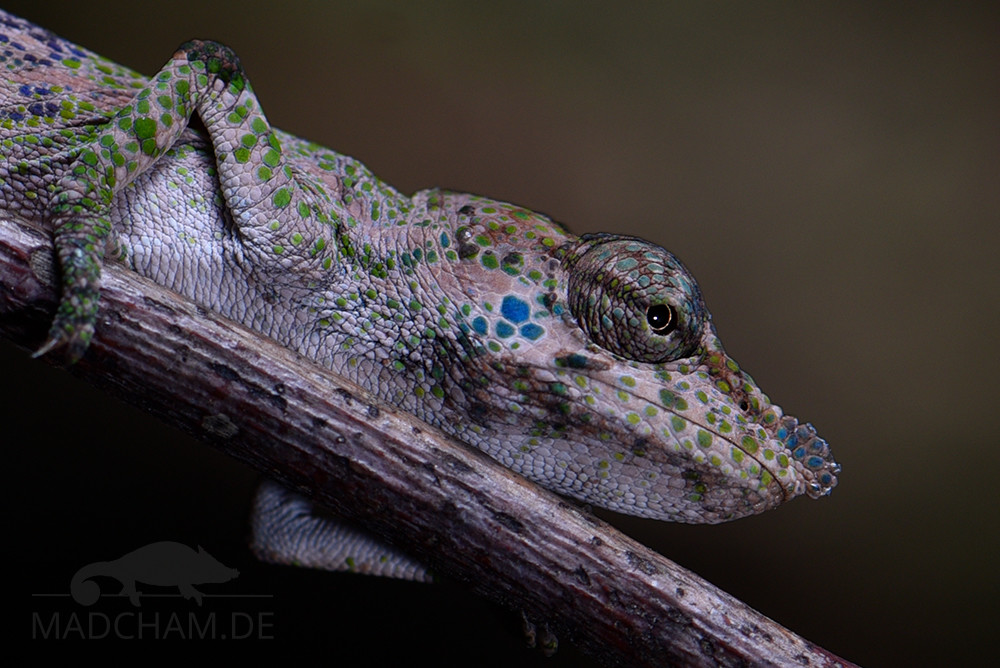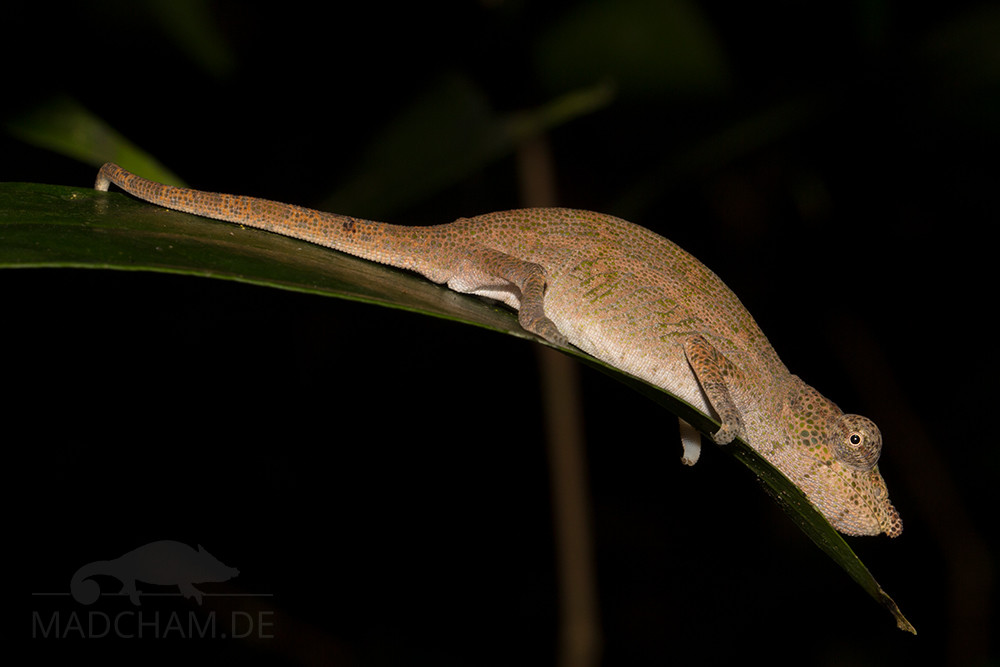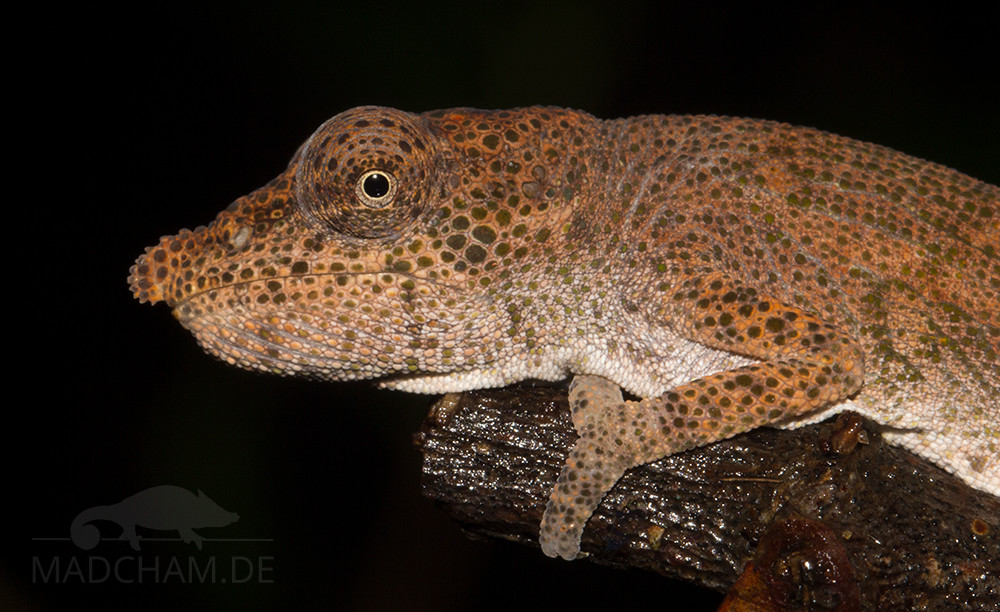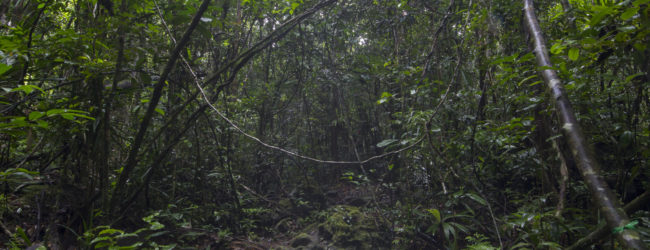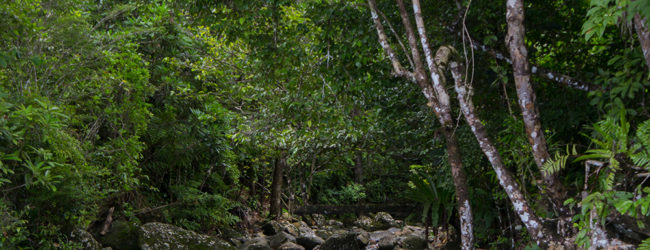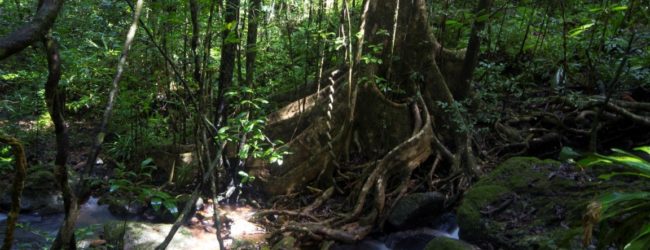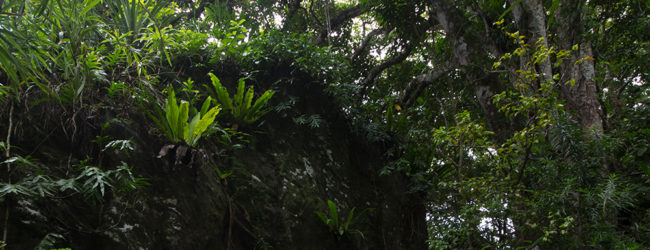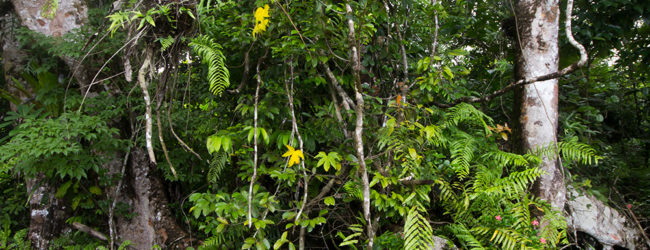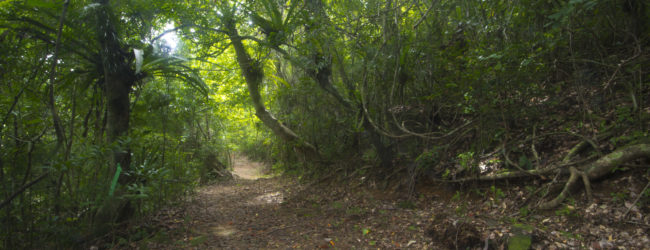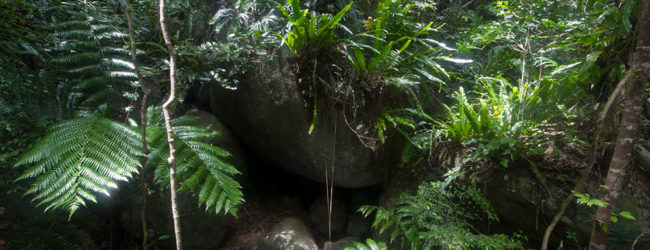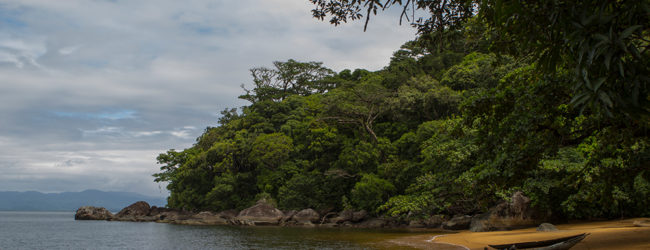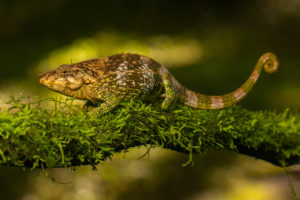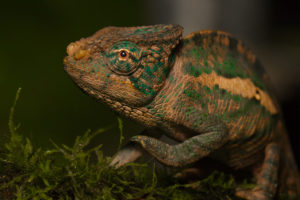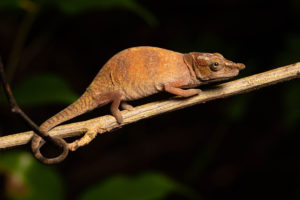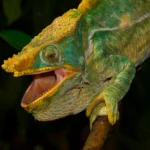no legal export possible
First description:
Mertens, 1933
Origin of the species name:
The German biologist Robert Friedrich Wilhelm Mertens, later director of the Senckenberg Research Institute and Natural History Museum in Francfort (Germany), named this chameleon species after the place where it was found, the Col de Pierre Radama, a place north of the Bay of Antongil. Today this place no longer exists in Madagascar. However, it was probably named after King Radama I, one of the most famous kings of the Merina ethnic group. The chameleon that Mertens described came from a Madagascar expedition of the Swiss anatomist Hans Bluntschli in 1931.
Distribution:
Calumma radamanus is only native to the rainforests around the Bay of Antongil in northeast Madagascar. This includes the Masoala National Park with its paradise island of Nosy Mangabe and the nearby forests of Tampolo and Analalava. The nearby Makira massif is also home to Calumma radamanus. From other areas of Madagascar similar-looking chameleon species have been named, but they are genetically different from Calumma radamanus and are therefore considered Calumma cf. radamanus until their final taxonomic classification.
Look and size:
Calumma radamanus belongs to the small chameleons with a total length of 7.7 to 9.3 cm. Both sexes have a round, downward-pointing rostral appendage. The rostral scale directly under the nose is integrated into the rostral appendage in this species. The males of Calumma radamanus wear a small only a little elevated casque (only 0.8-1.5 mm). Some males have a dorsal crest with six to eight spines.
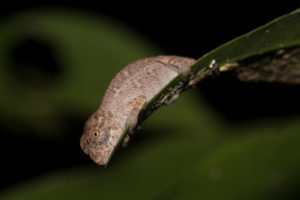
A freshly hatched juvenile of Calumma radamanus on Nosy Mangabe – the soft rostral appendage is still folded over like in the egg
The males wear relaxed light green scales with broad blue bands on the body. The latter may appear reduced to a few spots in massively stressed, very dark-coloured animals. Nose and carriage are often turquoise blue in colour. A white lateral stripe is always present. The females look quite similar when relaxed, but stand out with slightly more light green scales. Many Calumma radamanus have a dark stripe running from the nose over the eyelids to the helmet. If you encounter this chameleon species at night while sleeping, they look very unspectacular and are usually very monotonous beige in colour with dark scales on top.
Good to know:
Until 2020 this species and similar-looking chameleons belonged to Calumma cf. nasutum (cf. = confer = compare; denotes a similar species, but it is already known that it is not exactly the species named after the cf.) Only in 2020 Calumma nasutum was defined more precisely by Prötzel, Scherz et al. and Calumma radamanus was revised. There are still countless, very similar-looking species all over Madagascar, which are considered Calumma cf. radamanus and probably contain several, as yet undefined, chameleon species. Due to years of problems with the lack of genetic differentiation of different species, countless chameleons have been exported under the name Calumma nasutum since 2014. Most of these chameleons belong to Calumma radamanus or Calumma cf. radamanus. Calumma nasutum has a CITES quota for legal export, but Calumma radamanus actually does not.
| Jan | Feb | Mar | Apr | May | Jun | Jul | Aug | Sep | Oct | Nov | Dec | |
| Average temperature | 24 | 25 | 24 | 24 | 23 | 21 | 20 | 20 | 21 | 22 | 23 | 24 |
| Minimum temperature | 20 | 21 | 20 | 20 | 18 | 17 | 16 | 16 | 17 | 17 | 19 | 20 |
| Maximum temperature | 28 | 29 | 28 | 28 | 27 | 25 | 25 | 25 | 25 | 27 | 27 | 28 |
| Rain days | 26 | 23 | 25 | 19 | 17 | 18 | 21 | 21 | 16 | 17 | 20 | 24 |
We have collected the data given above over several years with thermometers and hygrometers at the finding places of the chameleons. "Average temperature" means that values of a whole month have been calculated to one average value per month. For example all measured minimum temperature values of February have been calculated to one average minimum temperature for February. In plain language, this means single peak values of a day may be a little higher or lower than the average minimum and maximum temperatures. It is possible that a location has an average maximum temperature of 29°C, but one day during that month it had 33°C or even 35°C there.
Climate on Nosy Mangabe is a very humid place. It is raining all year long with especially intense precipitation during rainy season. The rainforest of this island reaches right to the edge of the beach, and is an old forest with many huge trees and much undergrowth.
Temperatures on Nosy Mangabe are rather constant all over the year with few variation. Temperatures during daytime reach 25°C, in rainy season they might be around 30°C. Instead dry season has cooler temperatures, but only few °C less: It is still warm with around 25°C during the day. At night, temperature drops only few degrees.
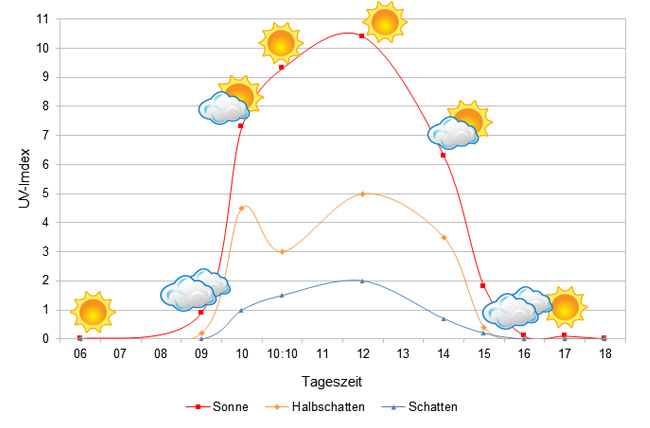
We have measured UVB data with a Solarmeter 6.5 in spring (end of March) at the peak of activity of chameleons in Madagascar. We always measured the values that a chameleon could maximally reach in its habitat.
| Jan | Feb | Mar | Apr | May | Jun | Jul | Aug | Sep | Oct | Nov | Dec | |
| Average temperature | 24 | 25 | 25 | 24 | 24 | 23 | 21 | 20 | 21 | 22 | 23 | 24 |
| Minimum temperature | 20 | 21 | 20 | 20 | 18 | 17 | 16 | 16 | 17 | 17 | 19 | 20 |
| Maximum temperature | 28 | 29 | 28 | 27 | 25 | 25 | 25 | 25 | 25 | 27 | 27 | 28 |
| Rain days | 26 | 23 | 25 | 19 | 17 | 18 | 21 | 21 | 16 | 17 | 20 | 24 |
We have collected the data given above over several years with thermometers and hygrometers at the finding places of the chameleons. "Average temperature" means that values of a whole month have been calculated to one average value per month. For example all measured minimum temperature values of February have been calculated to one average minimum temperature for February. In plain language, this means single peak values of a day may be a little higher or lower than the average minimum and maximum temperatures. It is possible that a location has an average maximum temperature of 29°C, but one day during that month it had 33°C or even 35°C there.
Several examples of a daily pattern of temperatures in Masoala in the rainy season are given below. They were recorded with data loggers in 2023.
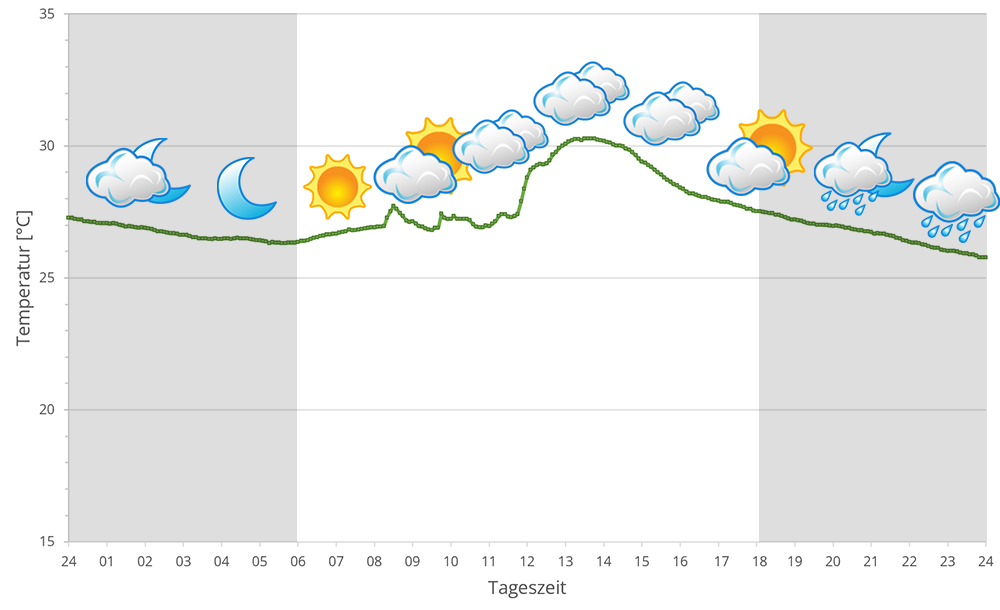
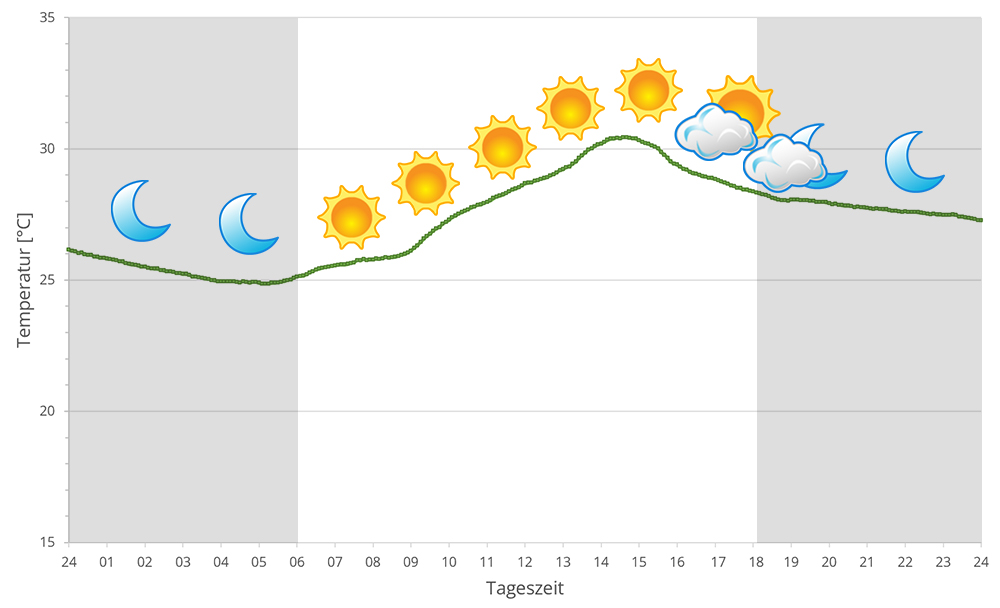
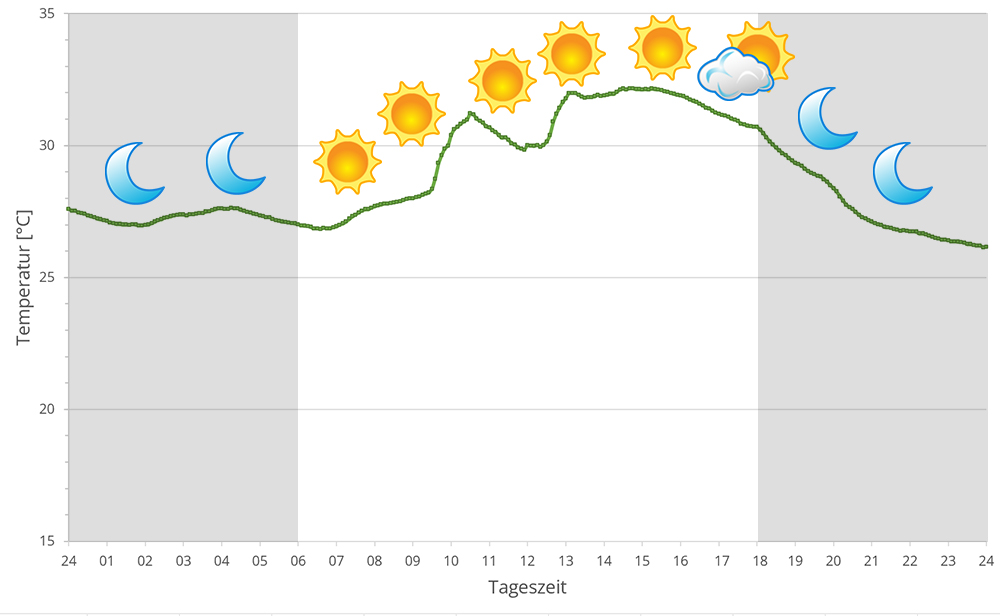
Masoala's rainforest is located at the coast with broad side to Antongil bay which behaves more like an open sea concerning climate. Accordingly, spring brings cyclones each year. During rainy season, it rains very intensively on a daily base. But also dry season is not really dry but has regular precipitation.
From October to April it is warmer than usual in Masoala, with temperatures reaching over 30°C in sunny spots. At night, temperatures drop only slightly. The rest of the year, from May to September inclusive, it is different: at night, during the dry season, temperatures plummet to 16°C at night, while at night it is still Mediterranean warm. In 2023 we measured relative humidity with data loggers on several days in Masoala during the rainy season, the data can be found below.
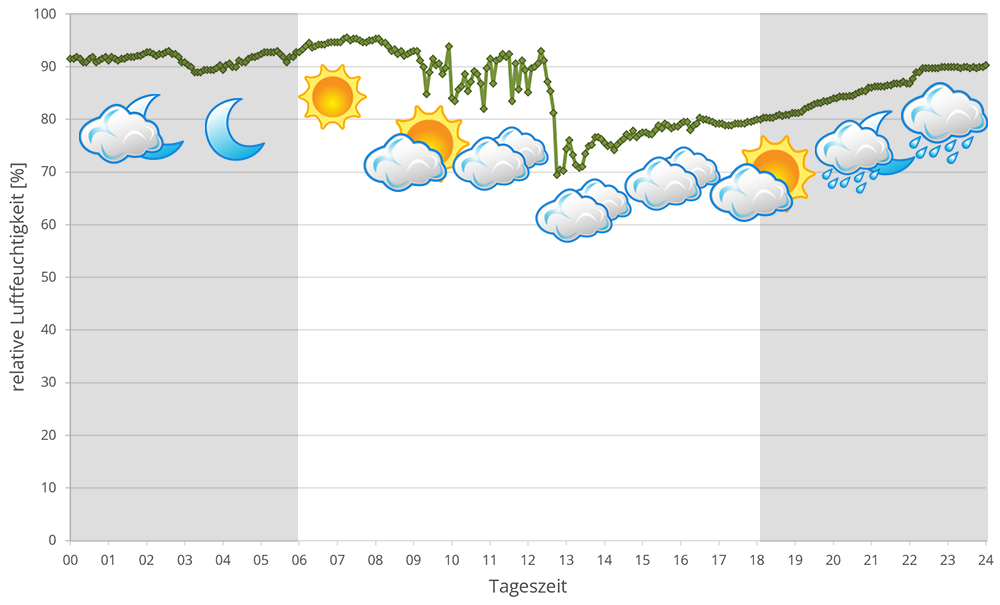
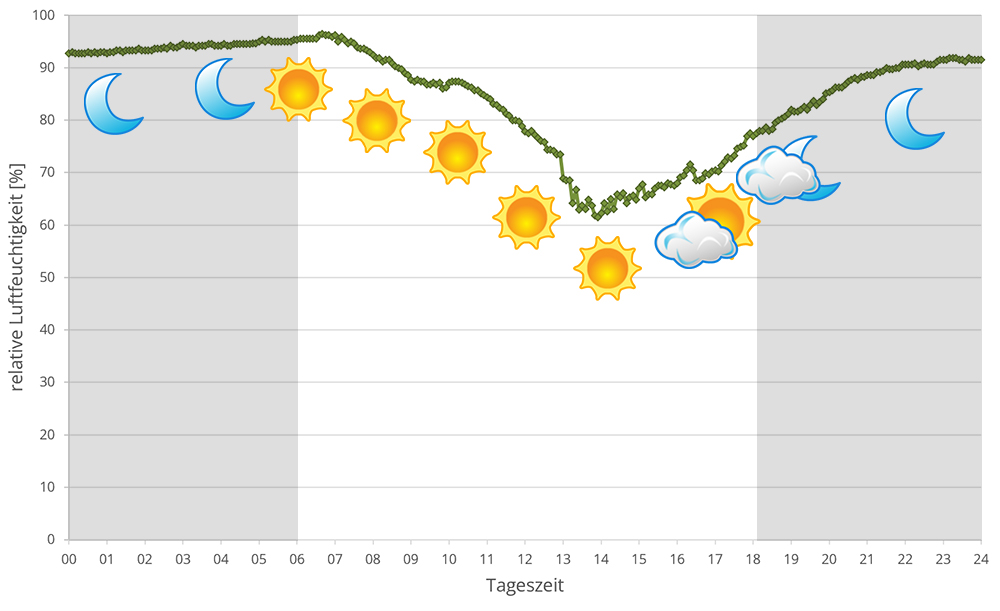
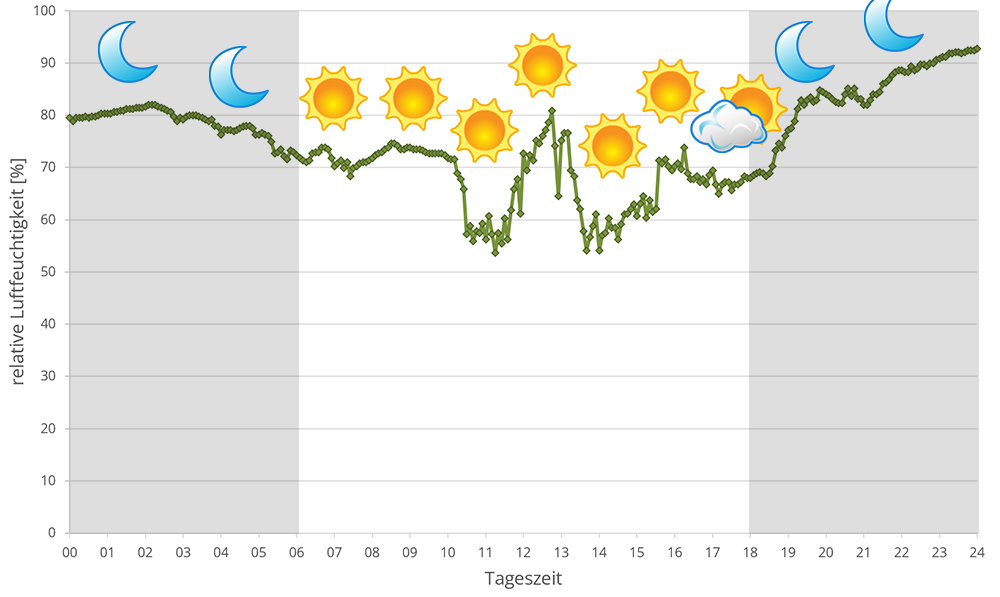
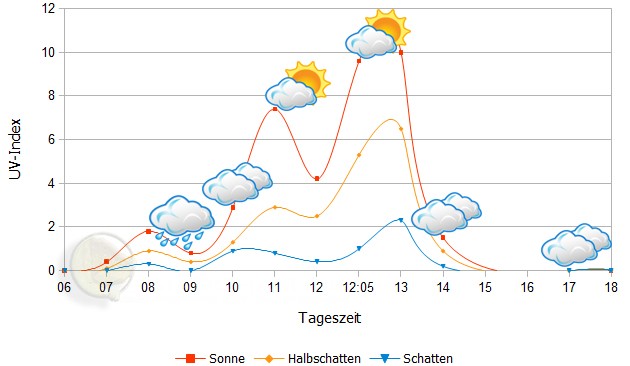
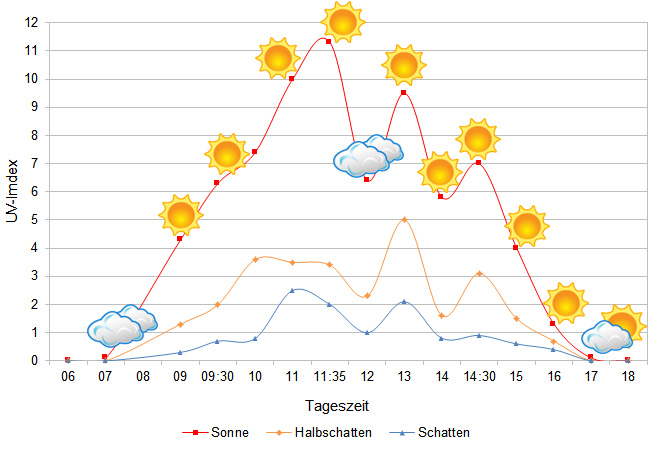 Tageszeit = day time, Sonne = sun, Halbschatten = half shade, Schatten = shade
Tageszeit = day time, Sonne = sun, Halbschatten = half shade, Schatten = shade
We have measured UVB data with a Solarmeter 6.5 in spring (end of March) at the peak of activity of chameleons in Madagascar. We always measured the values that a chameleon could maximally reach in its habitat.
In 2023, in addition to other climate data, we also measured the air pressure at the places we visited in Madagascar. The following data is from several days during the rainy season in Masoala. The X-axis shows the time of day or night. In Madagascar, the day begins around 6 am, and night falls at 6 pm. The Y-axis shows the atmospheric pressure in hPa.
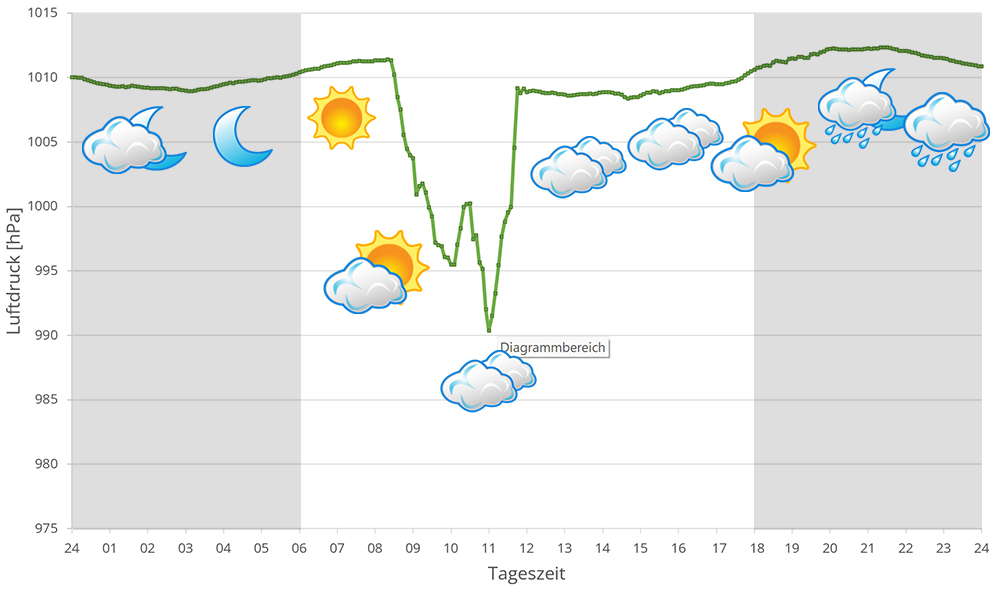
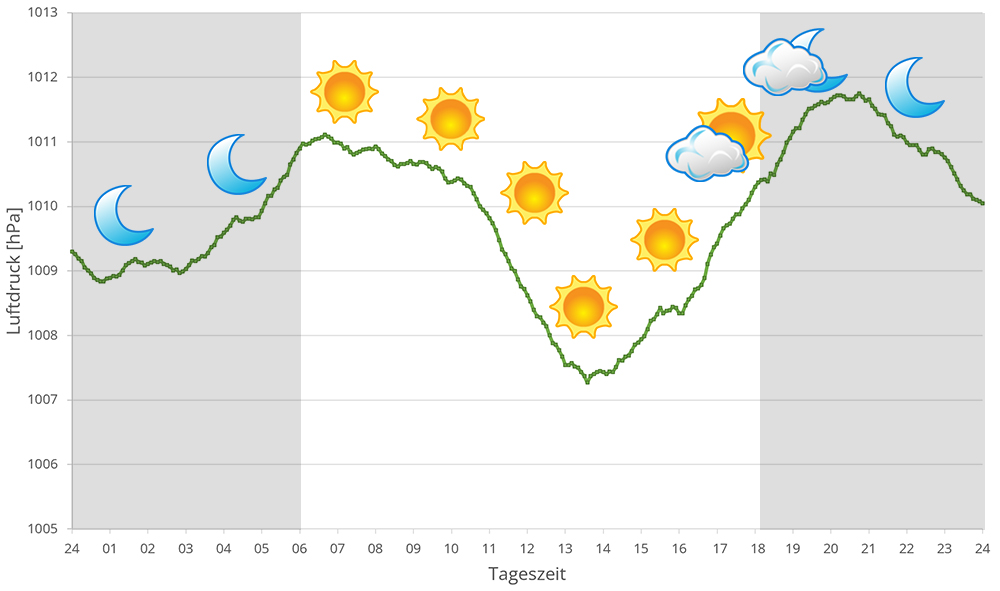
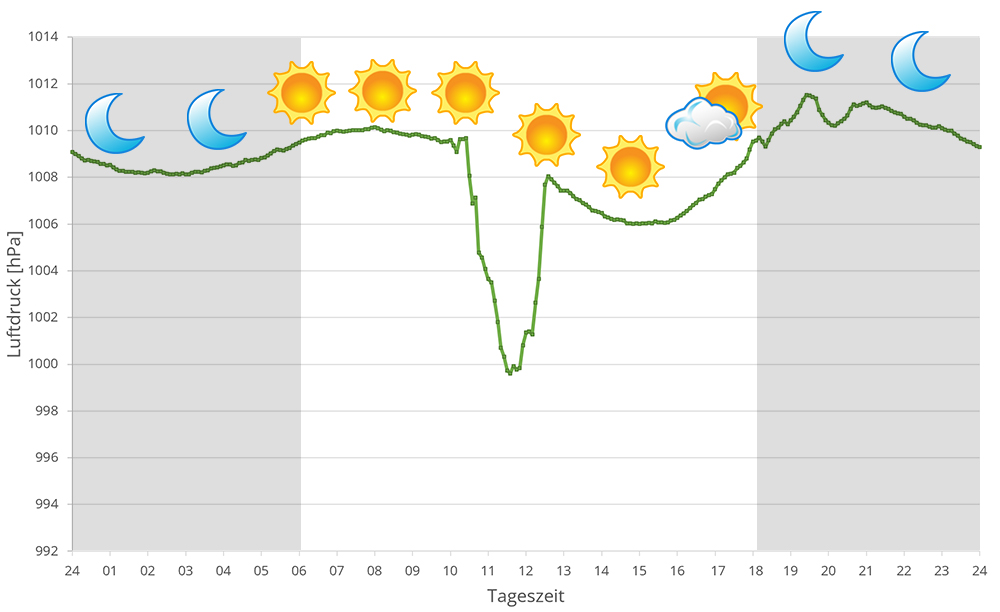
Habitat:
The following photos show parts of the habitat of Calumma radamanus during the rainy season in Masoala and on Nosy Mangabe. In both regions, the intact rainforest still prevails but is bordered by secondary vegetation. Calumma radamanus is mainly found directly in the rainforest, in closed forest areas with a lot of undergrowth. The animals prefer bushes and trees with very thin, narrow branches and many small leaves.

